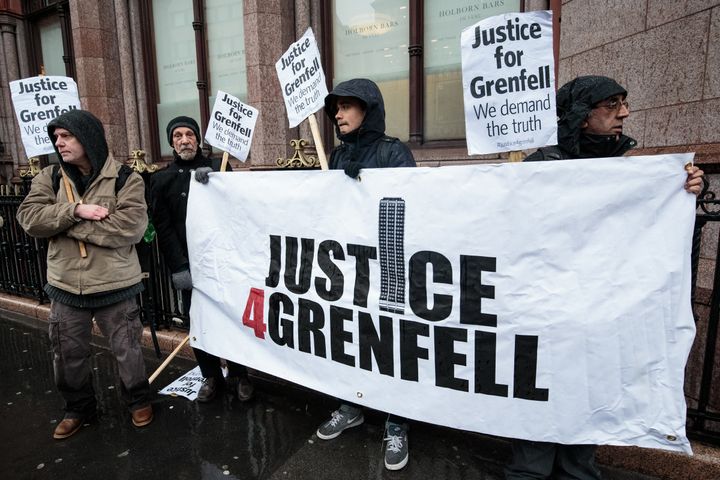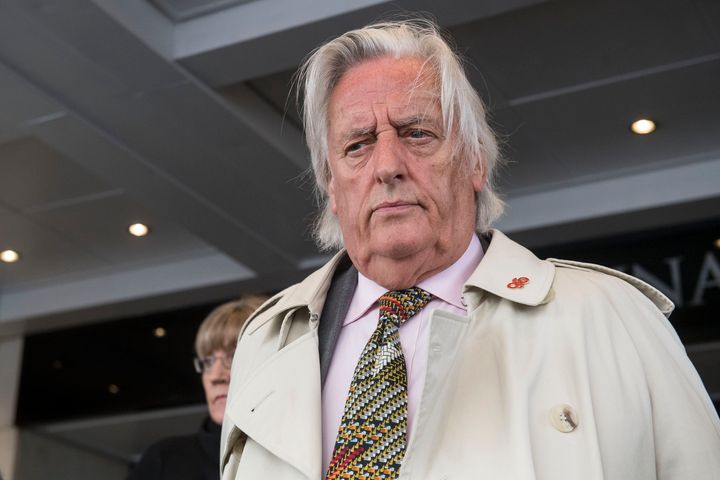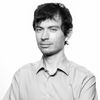The first hearings of the long-awaited inquiry into the Grenfell Tower fire have wrapped up after two days of trying to address questions of how survivors and relatives of those who died will be heard.
The procedural sessions focussed on issues including how documents should be disclosed to “core participants”, including residents, survivors and relatives of those who died in the blaze on June 14 that killed 71 people.
But the most emotive issue was whether the inquiry chair should be helped by a panel, drawn from the local community, and what powers it should have.

Seven Key Moments From The Two Days
The Metropolitan Police revealed its investigation was considering charges of misconduct in a public office, meaning it is looking at whether to prosecute individuals and not just bodies such as the council.
Peter Weatherby, one of the lawyers representing survivors of the blaze, said the inquiry should move from its central London base in Holborn to “closer to where the disaster occurred” in Kensington.
Barrister Leslie Thomas, who is also representing survivors, gave a passionate speech about why those on the inquiry should be more diverse, contrasting the “homogenised group” of lawyers on it with the victims of whom he said: “You couldn’t get a more diverse group of people.”
The Fire Brigades Union said it opposed the appointment of a former senior fire officer as an expert witness to the inquiry. Martin Seaward, barrister for the FBU, which has campaigned against cuts and station closures, told the inquiry that Steve McQuirk had supported and implemented changes to the fire service as a chief in Manchester and was always “opposite end of the table” to the FBU. “He would strive to show that deregulation, cuts and closures were irrelevant to what happened at Grenfell,” Seaward said.
Lawyer Michael Mansfield argued aggressively for a panel to sit alongside Moore-Bick that had the power to make decisions, rather than one that merely consults with him. The inquiry chair made comments some thought suggested he favoured the latter option.
The lawyer representing Rydon, the company that refurbished the tower before the blaze, warned against “unstructured or chaotic” disclosure of evidence. Stuart Catchpole described another inquiry he had appeared before that decided to “to disclose documents almost as soon as they were received”. “It made it impossible ― I can say impossible ― for anyone meaningfully to get on top of that evidence,” he said.
The inquiry heard evidence that hinted at the sheer size of documents that it would have to consider. By November 8, The Royal Borough of Kensington and Chelsea had given the police 1,516,427 documents relating to Grenfell, its lawyer told Tuesday’s hearing.

The Key Moment
On Monday, lawyers representing victims of the fire described in emotive terms, with one, Allison Munroe, saying: “We also have to be very, very much alive to the fact that this disaster happened... within a pocket of one of the richest boroughs in London... That is a reality that cannot be ignored.”″
But human rights lawyer Michael Mansfield was the most dramatic, calling the fire “a national atrocity” shortly after he stood to speak.
He said:
“How on Earth, in the 21st century, in one of the richest boroughs of the United Kingdom, can a block like this just go up in flames with so many casualties involved?
“I do of course include those who died in the block, but the casualties are far greater than that, that is the people who live around the immediate vicinity, but far greater than that, because everyone who lives in a tower block will have been affected by that.
“In fact, everybody has a collective responsibility, and that is the way in which, in a sense, the system was shaken at that point.
Everybody said to themselves: well, if it can happen to them, it can happen to me. Therefore, the need to generate and regenerate trust began the moment the fire took place.
“But there is a slight reflection backwards, which I mention at this stage. I know it’s in the list of issues, but this had been predicted, or at least the danger of fire had been predicted. So even before the fire, people who lived in the block - and it’s a very, you have heard, diverse community in its own right - as well as neighbouring blocks had actually made warnings, given warnings of this kind of thing.”
Who Gave Statements
The inquiry heard from 19 lawyers, including 10 representing ‘core participants’ - survivors, residents and bereaved people. They were:
Sir Martin Moore-Bick, Inquiry chair
Richard Millett, counsel for the inquiry,
Danny Friedman, appearing for a group of the core participants
Michael Mansfield, representing 44 core participants
Pete Weatherby, representing 73 core participants
Allison Munroe, representing core participants
Sam Stein, representing core participants
Leslie Thomas, representing core participants
Justin Bates, representing core participants
Kate Ellis, representing core participants
Lindsay Johnson, representing tower and walkway residents
James Maxwell-Scott, representing Kensington & Chelsea council
Alice Jarratt, representing the Tenanat Management Organisation that ran the tower on the council’s behalf
Aidan Christie, representing CEP Architectural Facades
Stuart Catchpole, representing Rydon
Stephen Walsh, represent the London Fire and Emergency Planning Authority
Martin Seaward, representing the Fire Brigades Union
Louis Browne, for the Fire Officers’ Union
Jason Beer, representing the Secretary of State for Communities and Local Government
Fiona Murphy, appearing for core participants

What happens now?
These hearings were about process and so will the next one. After that come the sessions about evidence.
Sir Martin retired on Tuesday, saying he would respond in writing to what he had heard.
There were hopes the inquiry could produce its first report by Easter but these were dashed earlier this year after the scale of the job ahead was revealed.
The inquiry is set to interview around 500 witnesses, many of whom must give statements first to the police, whose investigation is separate.
“Taking statements from such a large number of people, many of whom have been traumatised by their experience, is a time-consuming, but essential, process which has yet to be completed,” the inquiry said in a statement last month.
There is no confirmed date for the next hearing.

